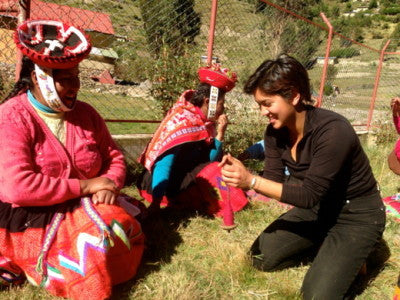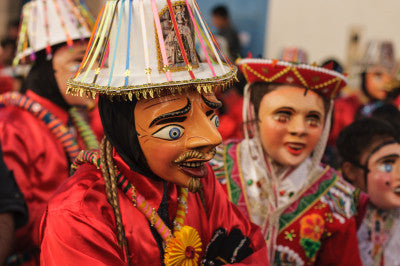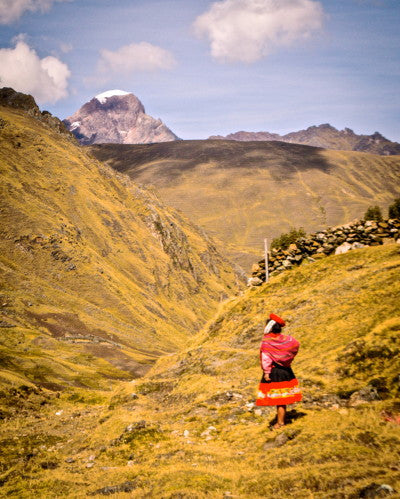I paid the taxi driver 4 Peruvian soles when he dropped me off at my final destination in Cusco: the Threads of Peru office. I carefully unloaded my MacBook Air and journal onto the desk that would be mine for the next three months. I came from Berkeley, California to Cusco, Peru to be Threads' Social Media intern, meaning I manage Threads' Social Media platforms and build the online community. I connected to wifi, checked my email, and was ready to go.
About two hours into my internship, my project director, Dana, announced one of the artisans, Roberta, was coming in from the community of Uppis to discuss different color yarn options. So there I was, first day on the job sandwiched between my lap top and an indigenous artisan who graciously gifted me with an intricately woven bracelet before she left on a four hour bus ride back to her community.

3 boys from the community of Chaullacocha. Photo by Stephanie Pardi
Little did I know that moments like these would become a regular occurrence during my time interning with TOP. Though I have been here for two months now, I am perpetually astounded by the contrast between my work of updating Threads' Facebook, Twitter, and Instagram in an office setting and interviewing the artisans at a field 4,800 meters high. During the weekdays, I step over tangled extension cords, and on the weekends I step over brightly colored threads being warped for weaving. The kids in the communities sheepishly giggle as we take "selfies" on my iPhone, and I coyly laugh as the women try to teach me the art of spinning alpaca wool into thread that they have long mastered.

Taking an iPhone "selfie" with 2 kids in the schoolhouse of Chaullacocha. Photo by Olivia Campus.
At times, I can't help but feel that my internship exists in two distinct worlds, the artisan's world, and the world of technology. I will feel this way sitting in an artisan's backyard with snowcapped mountains as the backdrop of this setting, and then a weaver will get a phone call, answer her cell, and start laughing and chatting away. At this point, I feel my own phone tucked away in my pocket, and realize that perhaps our worlds are not so far apart after all.
Post by Stephanie Pardi, Social Media Intern.









